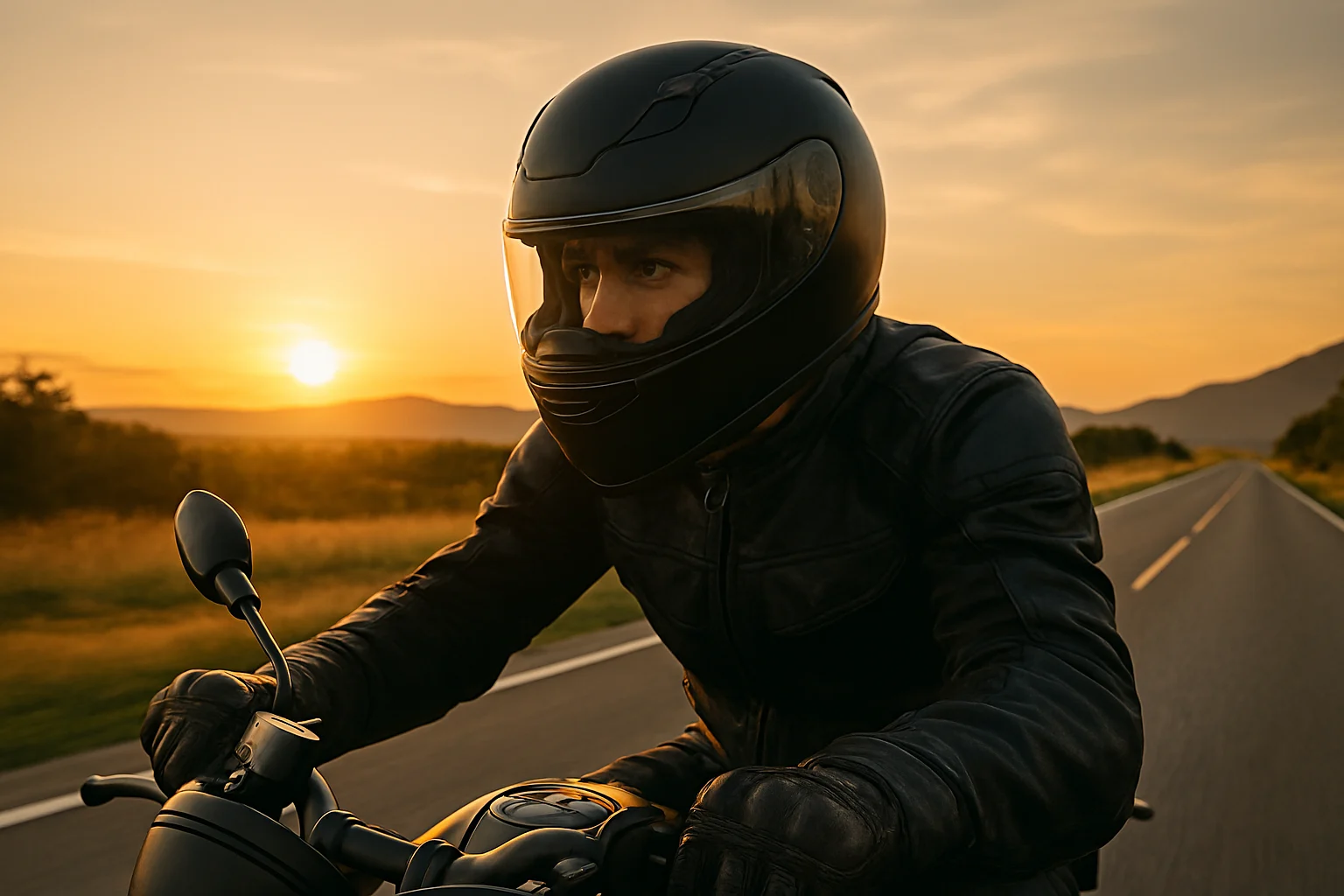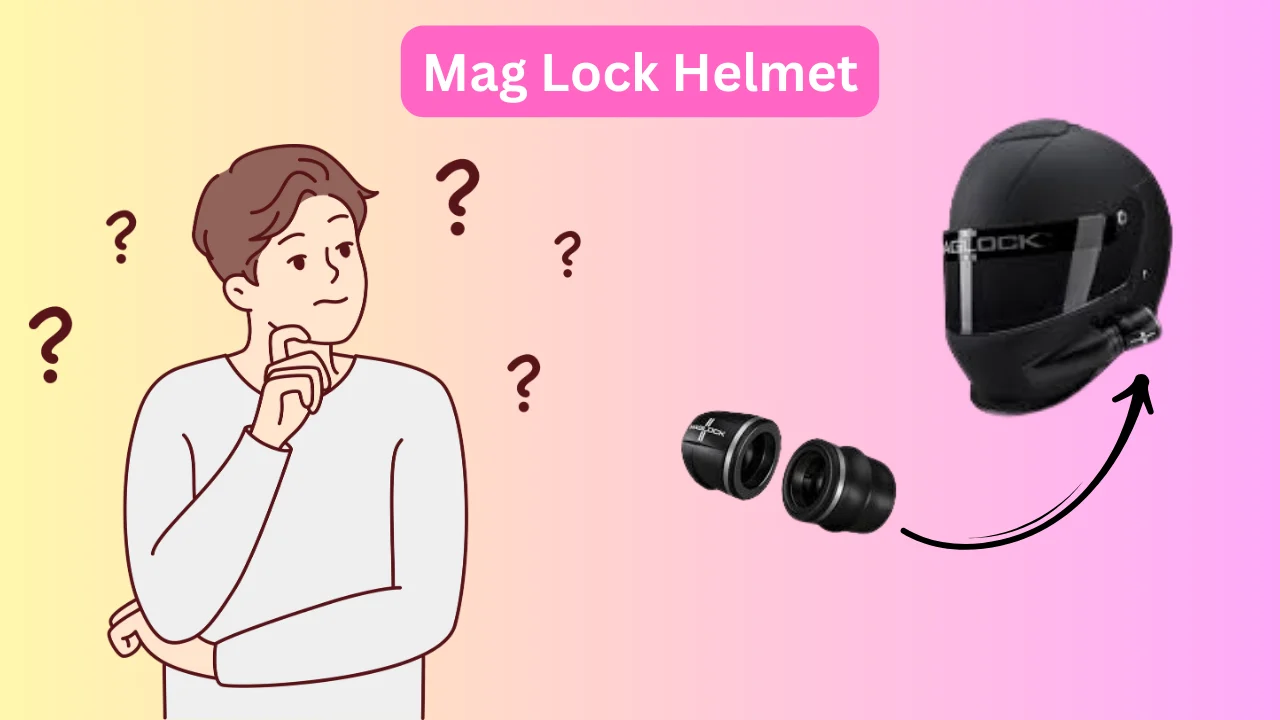Want to learn how to strap a motorcycle helmet? Strapping a motorcycle helmet might seem like a simple task, but trust me, it’s one of the most important things you can do to keep yourself safe while riding.
I’ve been riding motorcycles for years, and I’ve learned that wearing a helmet is just the beginning. Without strapping it properly, even the most expensive helmet won’t do much to protect you.
According to the National Highway Traffic Safety Administration (NHTSA), helmets reduce the risk of head injuries by 69% and death by 37%.
But those stats only apply if your helmet is secure on your head, and that’s what I want to help you with today. In this guide, I’ll share my personal experience on how to buckle it so you’re not just wearing it, but wearing it correctly.
Quick Fix
To securely strap a motorcycle helmet, position it low on your forehead and pull the chin strap through both D-rings, looping it back through one. Tighten it until snug, leaving enough space for two fingers between the strap and your chin. Secure any extra strap to prevent distractions.
A properly buckled helmet ensures protection in case of an accident. Quick-release buckles offer a faster option. Buckling your helmet correctly is key for both comfort and safety on every ride.
Why Strapping Your Helmet Properly Matters
I remember one of my early rides when I hadn’t quite figured out how to strap my helmet properly. I was cruising down the highway when I felt the wind tugging at my helmet.
It wasn’t strapped tightly enough, and I realized just how dangerous that could have been if I had hit a bump or, worse, crashed.
From that moment on, I made sure my helmet was always securely strapped before I even turned the key. It’s a small habit, but it’s crucial. I want to share the steps I follow every time I get on my bike, so you don’t have to learn the hard way like I did.
Step-by-Step Guide on How to Strap a Motorcycle Helmet
Let me break down the process I use to strap my helmet. It’s easy once you get the hang of it, but the key is getting into a consistent habit so it becomes second nature.
Step 01: Position the Helmet on Your Head
I always make sure to place the helmet squarely on my head, covering my forehead. It should sit snugly—neither too far back nor forward. I’ve found that if a helmet moves around even slightly, it’s not safe.
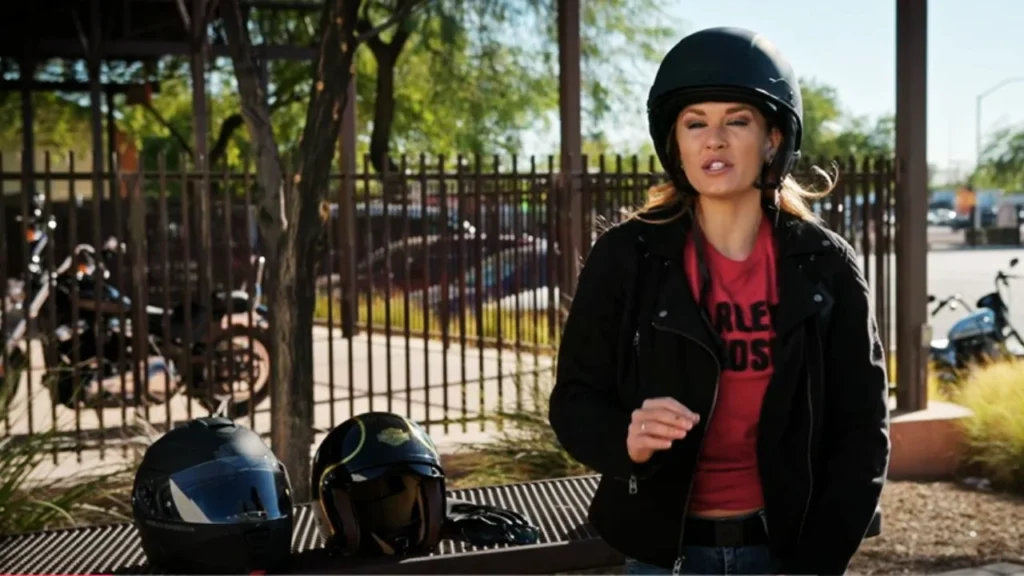
If you’re ever unsure, a good rule of thumb is to ask yourself how is a motorcycle helmet supposed to fit? It should be tight enough not to shift but still comfortable.
Step 02: Align the Chin Straps
One thing I learned the hard way is that twisted straps can be uncomfortable and unsafe. Every time I put on my helmet, I pull the chin straps down on both sides of my face and make sure they’re flat against my skin.
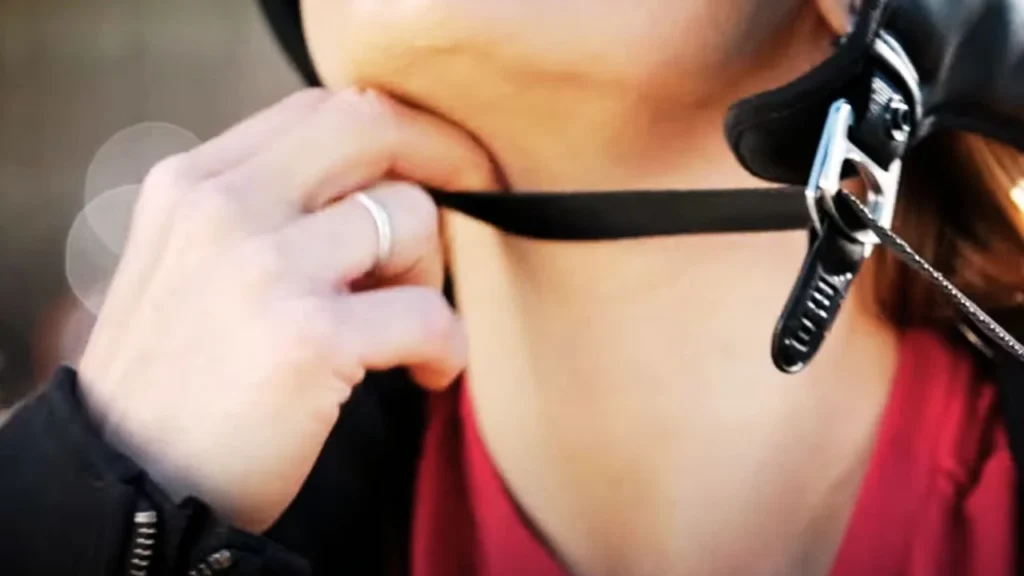
Step 03: Thread the Straps
My helmet has D-rings, so I thread the strap through both rings, then loop it back through the bottom ring. It sounds complicated, but after doing it a few times, it becomes second nature. If you have a quick-release buckle, it’s even easier—just clip it in until you hear the click.
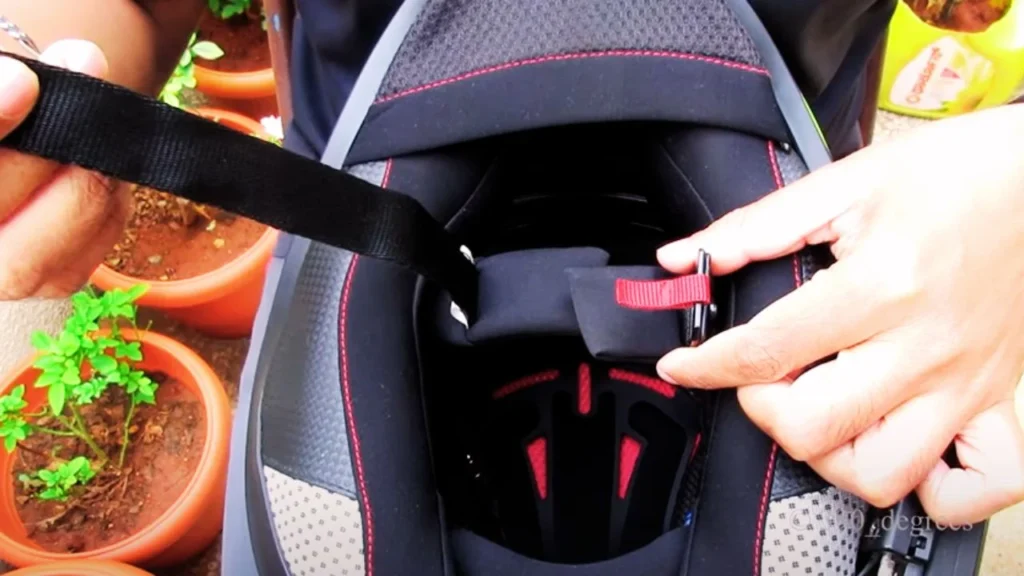
Step 04: Adjust the Strap Tightness
Here’s the crucial part. You need to make sure the strap is snug but not too tight. I always check by sliding two fingers between the strap and my chin. Any more than two fingers, and I know it’s too loose. A loose strap could mean your helmet flying off during a crash—and trust me, that’s the last thing you want.

Step 05: Secure the End of the Strap
Most helmets have a button or loop to secure the end of the strap, and I never skip this step. Letting it dangle can be a distraction and could even loosen the strap while you’re riding.
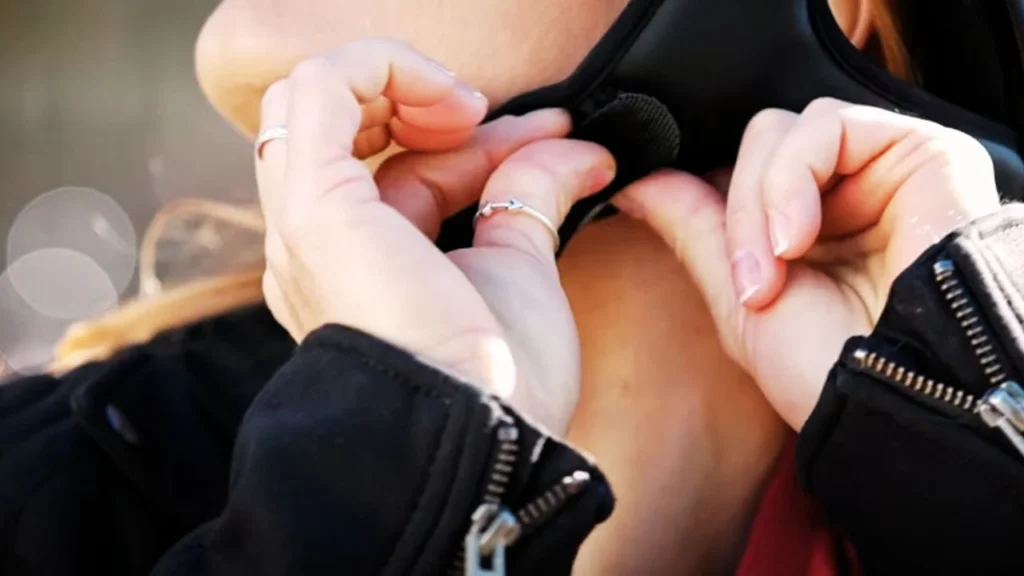
How to Lock and Attach Your Motorcycle Helmet to Your Bike
When I’m out riding and need to leave my helmet on the bike, I make sure it’s secured to avoid losing it. If you’re not sure how to do this, here’s a quick guide that’s been really useful to me over the years.
How Do You Lock a Helmet Strap?
To lock the helmet strap, I use a small padlock. I thread the end of the strap through the hole in the padlock, then back through the D-ring on the helmet. Pull tight, and lock it up. This way, I know my helmet won’t go anywhere when I’m not looking.
How Do I Attach My Motorcycle Helmet to My Bike?
Attaching your helmet securely to your bike is crucial, especially if you’re stepping away from it for a while. Here’s how I do it:
- Find the Right Spot on Your Bike: I usually attach my helmet to the left side of the handlebars. It’s easy to reach, and I can quickly grab it when I’m ready to ride.
- Attach the D-Ring Strap: I hook the D-ring strap from my helmet to the ring or hook on the bike. Make sure the strap is tight and secure, so the helmet doesn’t come loose.
- Put on the Helmet: Once I’m ready to go, I put the helmet on and adjust the straps so they fit snugly around my head, checking that everything is tight and comfortable before hitting the road again.
Common Mistakes to Avoid
Looking back, I’ve definitely made some mistakes when it comes to strapping my helmet. I hope you can learn from them:
- Strapping Too Loose: Early on, I would sometimes leave the strap too loose, thinking it was more comfortable. Big mistake. I quickly realized that comfort means nothing if the helmet flies off in an accident.
- Twisted Straps: I’ve learned to check that my chin straps are flat every time. Even a minor twist can make long rides uncomfortable.
- Helmet Sitting Wrong: When I first started, I would often let my helmet tilt back slightly, leaving my forehead exposed. Now, I make sure it’s sitting squarely on my head, covering the front properly.
How to Care for Your Helmet
After years of riding, I’ve realized that strapping your helmet correctly is only half the job. Maintaining it properly ensures it lasts longer and continues to protect you as it should. Here are a few tips I follow:
1. Cleaning the Inside
I clean my helmet regularly because, let’s face it, helmets get sweaty. Knowing how to clean the inside of a motorcycle helmet has kept mine fresh for years. I just use a bit of mild soap and water to clean the liner.

2. Washing the Pads
Over time, the padding inside my helmet gets pretty dirty. I’ve learned how to wash motorcycle helmet pads by simply removing them and giving them a gentle hand wash. It’s easy and makes a big difference in comfort.
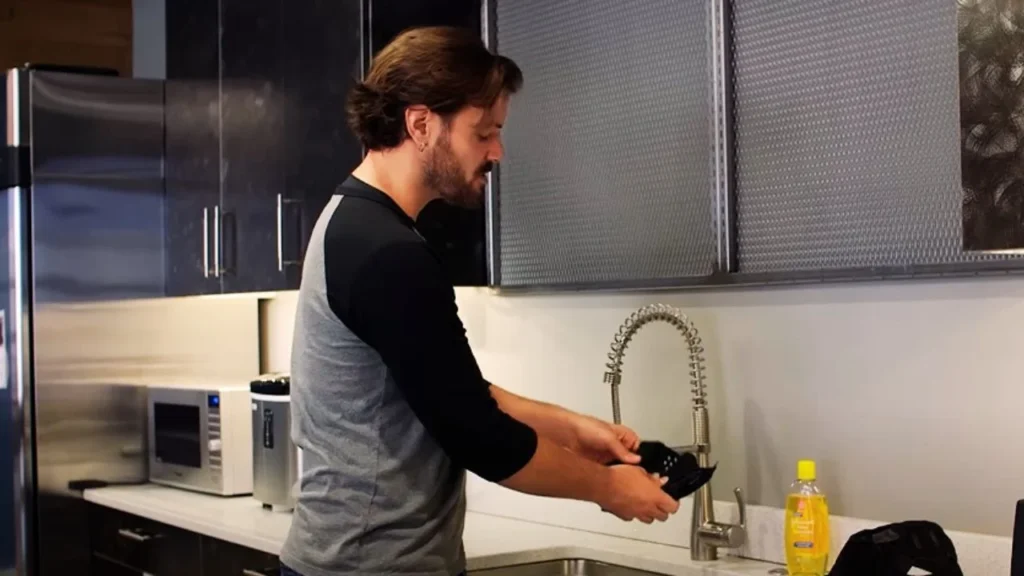
3. Using a Helmet Lock
I’ve also had a helmet stolen before (yes, really). Now, I always use a lock when I leave it on my bike. If you haven’t already, check out how to use a helmet lock on a motorcycle to keep your helmet safe when you’re parked.
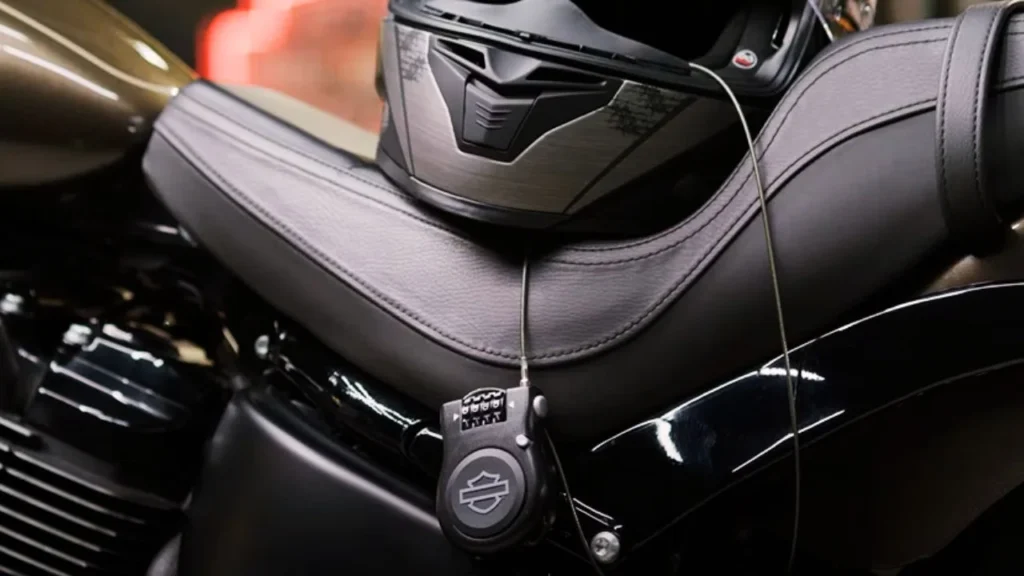
4. Helmet Replacement
Finally, it’s important to replace your helmet regularly. I change mine every five years, or sooner if I’ve had an accident. Experts say how often should you replace a motorcycle helmet is around every five years due to wear and tear.
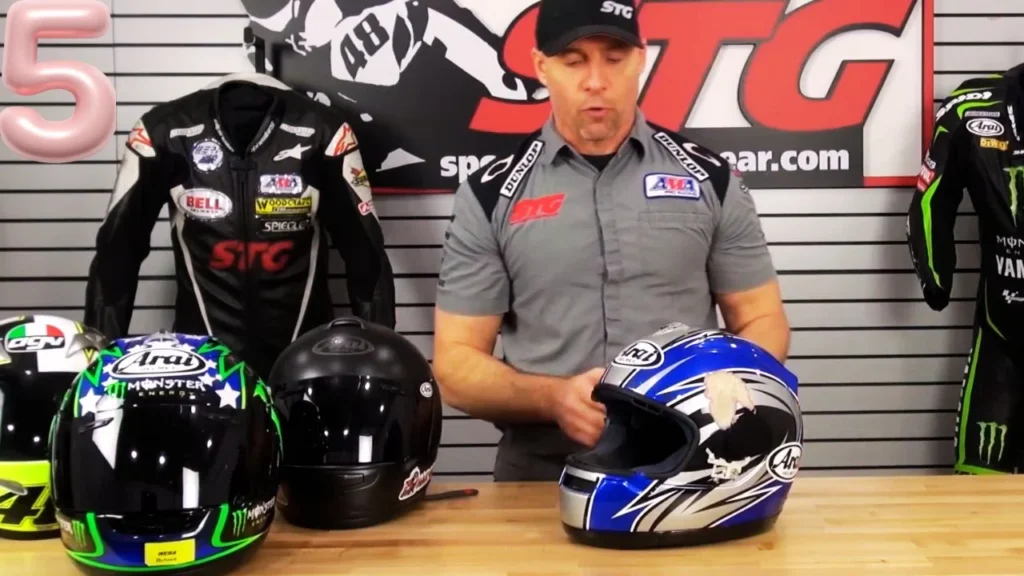
Conclusion
If there’s one thing I’ve learned over the years, it’s that knowing how to strap a motorcycle helmet properly could save your life. It’s not just about putting the helmet on; it’s about making sure it stays on if the worst happens.
Following the simple steps I shared above on how to buckle a motorcycle helmet will keep you safe and secure. Remember, don’t rush it. Take a few seconds to adjust the straps and check everything.
After all, your safety depends on it. Keep your helmet clean, replace it when necessary, and always check the fit. With these habits, you’ll not only enjoy your ride but do it safely, too.
Stay safe out there, and happy riding!
FAQs
1. Can I use any method to strap my helmet?
Most helmets use a D-ring or quick-release system. Always follow the manufacturer’s instructions for the best security.
2. How tight should the strap be?
The strap should be tight enough that you can fit two fingers between your chin and the strap. If it’s too tight, it will be uncomfortable, but if it’s too loose, the helmet won’t stay in place.
3. What happens if my helmet isn’t strapped properly?
If your helmet isn’t securely strapped, it can come off during an accident, leaving you vulnerable to serious injuries.
4. What should I do if the strap is too long?
Tuck the extra strap into the loop provided or use a strap holder to keep it secure and prevent it from flapping.
5. How do I know if the helmet fits correctly?
The helmet should fit snugly, sit low on your forehead, and not move around easily when pulled from the sides.




